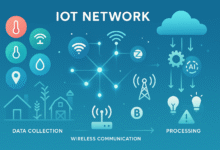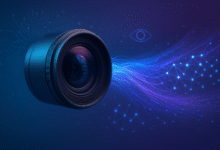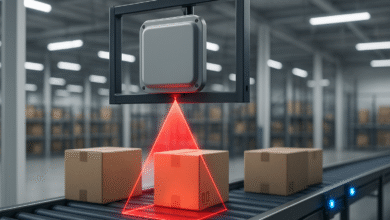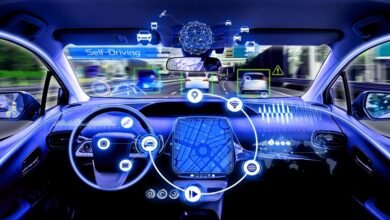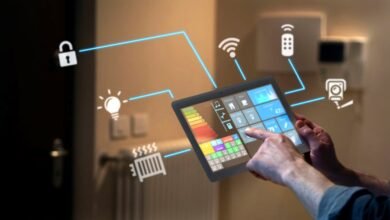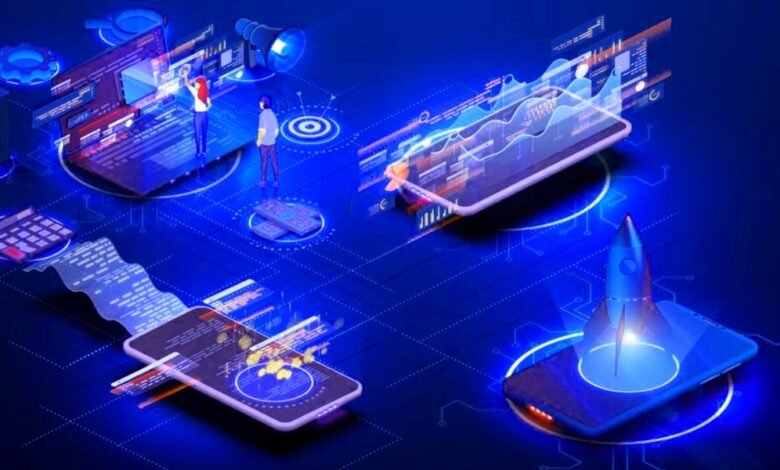
The Internet of Things (IoT) is reshaping how we interact with the physical world. From smart homes and wearable tech to industrial automation and connected healthcare, IoT has penetrated nearly every sector. With the global IoT market projected to exceed $1.5 trillion by 2025, innovation is accelerating at an unprecedented pace. At the forefront of this transformation are agile startups driving the future of connected ecosystems. Here, we highlight the top 5 startups disrupting the IoT landscape in 2025, exploring what sets them apart and how they are shaping the future.
1. EdgeHive—Redefining Edge Computing for IoT
As IoT devices proliferate, the need for real-time data processing and low-latency communication becomes critical. EdgeHive, a San Francisco-based startup, is tackling this challenge by offering a next-generation edge computing platform designed specifically for IoT networks.
EdgeHive’s proprietary microservices architecture allows IoT devices to process data locally, minimizing reliance on cloud infrastructure. This reduces latency, improves security, and cuts bandwidth costs. Its plug-and-play SDK integrates seamlessly into various devices, enabling intelligent edge processing without the need for expensive hardware upgrades.
One of EdgeHive’s standout achievements is its partnership with smart city projects across Europe and Asia. Their edge nodes support traffic monitoring, environmental sensing, and infrastructure diagnostics in real-time, helping cities become more responsive and efficient. With growing adoption in the automotive, logistics, and agriculture sectors, EdgeHive is poised to become a foundational layer in the IoT edge infrastructure market.
2. Sensora Health—Revolutionizing Connected Healthcare
The healthcare IoT (IoMT) space has seen explosive growth, and Sensora Health, a Boston-based medtech startup, is leading the charge with its advanced wearable biosensors. These compact, flexible devices continuously monitor patient vitals like ECG, temperature, blood oxygen, and respiratory rate, all transmitted securely to cloud dashboards in real-time.
What makes Sensora Health unique is its proprietary AI engine that analyzes physiological data to predict medical emergencies such as cardiac arrest or respiratory failure before they happen. Hospitals, elder care facilities, and home health agencies are adopting Sensora to minimize readmissions and improve patient outcomes.
In 2025, Sensora expanded into remote mental health monitoring, offering insights into stress, anxiety, and sleep disorders using physiological markers. Their HIPAA-compliant architecture ensures data privacy while enabling proactive, AI-driven care. With partnerships across major healthcare networks, Sensora Health is transforming how medical professionals engage with patients in the connected healthcare ecosystem.
3. Agrolink AI—Smart Farming with Predictive Analytics
Agriculture remains one of the most promising fields for IoT adoption, and Agrolink AI is pioneering this movement with a suite of smart agriculture solutions. Based in the Netherlands, Agrolink provides IoT-enabled sensors and AI-powered analytics to optimize irrigation, soil health, and crop management.
Their flagship product, FarmVision, integrates drone imagery, soil probes, and climate sensors with machine learning algorithms to deliver actionable insights to farmers. From detecting early signs of crop disease to recommending precision fertilization, FarmVision empowers farmers to maximize yield while reducing environmental impact.
In 2025, Agrolink introduced blockchain integration to verify and trace agricultural data across the supply chain, enhancing transparency and sustainability. Their platform is widely adopted by cooperatives and agribusinesses across Europe, Africa, and South America. By converging IoT in agriculture with AI and blockchain, Agrolink is making farming more intelligent and resilient.
4. NeuroGrid Systems—Powering Industrial IoT with AI-Optimized Networks
Industrial IoT (IIoT) requires robust, secure, and scalable networking solutions. Enter NeuroGrid Systems, a Toronto-based startup that has developed a cutting-edge AI-driven mesh networking platform tailored for industrial environments.
Traditional industrial networks struggle with data congestion, signal interference, and scalability. NeuroGrid tackles these issues with an adaptive mesh protocol that uses reinforcement learning to optimize packet routing, reduce latency, and self-heal network faults. This allows seamless connectivity across large factories, warehouses, and oil rigs.
Their deployment in North America’s largest automotive plant increased uptime by 27% while reducing maintenance costs. In 2025, NeuroGrid launched a cybersecurity module that autonomously detects and quarantines IoT threats at the edge. Their system is quickly becoming the gold standard for secure, intelligent industrial IoT infrastructure, enabling true Industry 4.0 capabilities.
5. Atmosic Technologies—Ultra-Low Power IoT Connectivity
Battery life remains a major bottleneck in IoT deployment. Atmosic Technologies, a Silicon Valley-based startup, is addressing this challenge with its revolutionary energy-harvesting wireless chipsets.
Atmosic’s patented technology enables IoT devices to operate using ambient energy sources such as light, radio frequency, or thermal gradients, drastically reducing or even eliminating the need for battery replacements. Their chipsets are Bluetooth 5.3-compatible, making them ideal for smart home devices, asset trackers, and wearables.
In 2025, Atmosic introduced the M3+ platform, which combines energy harvesting with AI-based power management, extending device lifespans to over 15 years on a single coin-cell battery or eliminating the battery altogether. This has huge implications for environmental sustainability and scalability across global deployments.
By removing one of the biggest barriers to IoT adoption—power consumption—Atmosic is unlocking new possibilities in ubiquitous, long-term IoT connectivity.
The Road Ahead: Emerging Trends from IoT Startups
These five startups are just the tip of the iceberg. Collectively, they reflect several key trends defining the IoT revolution in 2025:
- Edge computing is becoming critical for latency-sensitive applications.
- AI and predictive analytics are transforming raw IoT data into actionable insights.
- Energy efficiency and sustainability are essential for scalable IoT adoption.
- Enhanced cybersecurity is necessary as networks grow more complex.
- Domain-specific solutions (e.g., healthcare, agriculture, and industrial) are leading the way.
As these innovators gain traction, their influence extends far beyond niche markets. Their technologies are converging into a global ecosystem where IoT is not just a set of connected devices but a transformative force across every aspect of life.
Investors, developers, and enterprises alike should watch these startups closely. They are not only disrupting the status quo but also laying the foundation for the next generation of intelligent, connected environments.
Conclusion
In 2025, the IoT landscape is being redefined by bold, visionary startups that blend advanced technology with real-world problem-solving. From enabling real-time decision-making at the edge to revolutionizing connected healthcare, agriculture, and industrial systems, these five companies exemplify the future of innovation. As the IoT market continues to expand, expect these players to lead the charge in shaping a more connected, efficient, and sustainable world.
